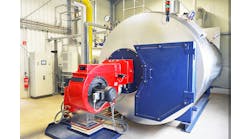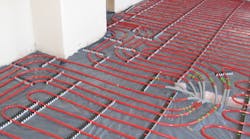As a professional comfort contractor, most people understand the need to listen to the consumer. You have two ears and only one mouth. Listen to the consumer to find out what their wishes, wants, needs and expectations are before you speak. I say this, because I have been practicing this method for most of my 40 years in this business. If we start talking first, we are assuming a lot of information that will lead to a dissatisfied, uncomfortable customer.
Granted, we are the experts in our field, but we still need to listen more than we talk during the initial visitation with the consumer on any comfort delivery system. I prefer selling radiant, because I know that it is the most comfortable, efficient system in the world. However, radiant floors are not in everyone’s budget, and some people may have a need for major air filtration and humidification or dehumidification needs, which radiant alone cannot provide. Hence this is why it is important to ask leading questions, then sit back and listen, and make notes. Remember, most consumers really don’t know the difference between forced air and radiant comfort delivery systems. They are just used to getting “heat” out of their system. Heat is but one component necessary for the proper delivery of comfort.
So, as this “conversation” progresses, it is important to ask the consumer what their wishes, wants, needs and expectations are so that we can provide a system that meets their wishes, wants, needs and expectations. Unfortunately, in today’s fast paced world of construction, the subcontractors rarely, if ever get an opportunity to sit in front of the end users during this “Discovery” process. This will result in a major disconnect in delivering a system that meets the end users’ expectations. In many cases, the general contractor is extremely price sensitive, and doesn’t want that conversation to happen.
Unfortunately, the GC doesn’t understand all of the nuances of a hydronic based comfort system, so the end user doesn’t have an opportunity to express their expectations, and consequently, the end user, who is really the most important customer, isn’t queried about their wishes, wants, needs and expectation and subsequently aren’t completely satisfied with the end results. To allay the fears of the GC, tell them that you will not discuss price, and that you will defer to them if price questions are raised. This will hopefully allow you to get an audience with the end users (both of the major decision makers), so that the conversation can be had.
If they respond that they have experience with hot water heat and prefer that, then you have to opportunity to tell them about all of the different types of hydronic heat that are available to them.
In order for the conversation to begin, you will need to ask the consumer some questions, like what kind of heating and cooling systems he or she has experience with?
Here are some other beneficial questions to ask:
• Which one did you like the best, and why?
• Are you familiar with the concept of radiant comfort? (Don’t put too much focus on radiant floors. More on this in a moment…)
• Do you or any of your family members have any special health considerations that need to be addressed, like allergies, need for humidification, air filtration, etc.?
• Do you like a warmer or cooler sleeping environment?
• Do you like a warmer or cooler bathing environment?
• How much zoning do you feel you may need?
• If radiant floors are requested, what kinds of floor finishes are going to be used? Will there be a significant amount of throw rugs placed on the final finished surfaces? (These don’t show on the construction drawings)
Once these foundational questions have been asked, it’s time to listen and take notes. As the conversation progresses, here is where you get an opportunity to share your knowledge and expertise. If they respond that they have experience with hot water heat and prefer that, then you have to opportunity to tell them about all of the different types of hydronic heat that are available to them. As it pertains to radiant floors, you must exercise caution. With today’s homes getting more energy efficient, the need for warm floors becomes less and less.
For example, a typical load per square foot for a super insulated home may be as low as 5 Btus per square foot per hour. That will require a floor surface temperature only 2.5 degrees above the ambient. A floor surface temperature of 72.5°F will not feel warm to the touch. The consumer, who was expecting real warm floors is going to be dis-satisfied. They will be more comfortable than they have ever been before, except that they were always expecting to have that warm toasty toe feeling, and unless it is forced, it’s not going to happen. Manage the consumers expectations by explaining this to them, and then there won’t be any after the fact surprises. As it pertains to warm floors, the absolute best place to have them is in a bathing environment.
Tune in next month as we continue our conversation. Until then Happy Spring Hydronicing!
Mark Eatherton material on this website is protected by Copyright 2017. Any reuse of this material (print or electronic) must first have the expressed written permission of Mark Eatherton and CONTRACTOR Magazine. Please contact via email at: [email protected].


